
Please note that this square man is frowning, thinking about the identities of the "uninvited guests" in front of him.

It turned out that she was in a dangerous situation. After realizing this, she quickly started a mental search to find a strategy to solve the problem.
In the end, she decided to flee the scene first, then seek help as quickly as possible and take immediate action.

At the same time, the person opposite was also thinking the same as her...

In " There is such a scene in "Minecraft" where all characters are controlled by artificial intelligence.
Each of them has a unique identity setting. For example, the girl mentioned before is a 17-year-old but smart and brave courier.
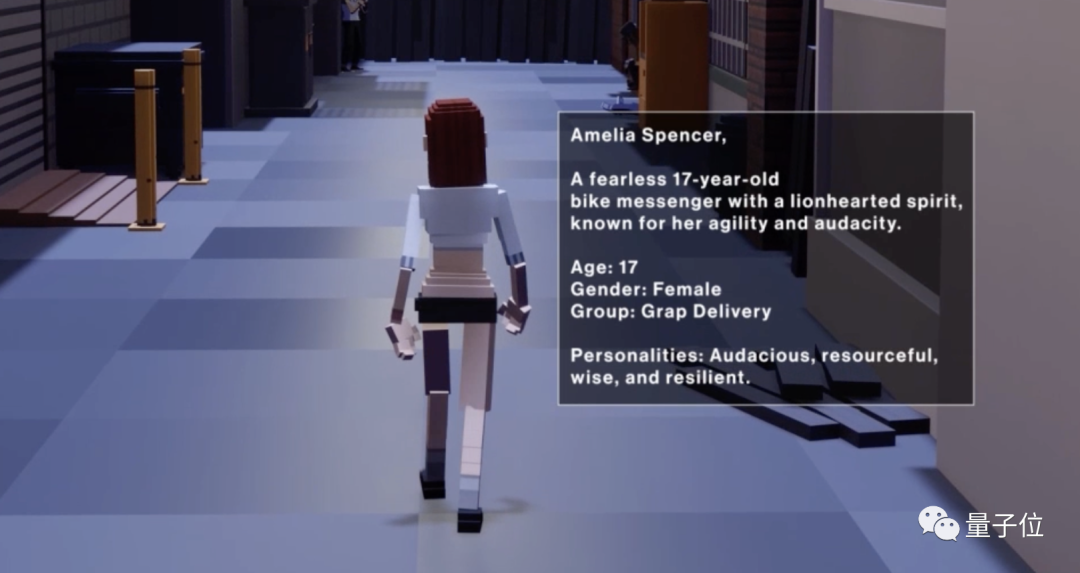
They have memory and thinking abilities and live like humans in this small town based on "Minecraft".
What drives them is a brand new language-based AI role-playing framework designed for the open worldLARP.
LA here refers to Language Agent, and LARP is the abbreviation of Live Action Role Playing, which is a double entendre.
In addition to having higher cognitive complexity, compared to traditional agent frameworks, LARP alsonarrows the gap between agents and open world games——
This type of game often does not have a specific "clearance standard", but allows players to freely explore it, and traditional game agents are often used to complete specific goals.
In addition, the focus of LARP is to highlight simulation and make the behavior of the agent closer to humans. For this reason, researchers even specially introduced a forgetting mechanism.
So, how is LARP implemented? Come find out soon.
The structure of LARP is modular, which specifically includes cognition, personality, memory, decision-making, etc. component.
Among them, the memory module is composed of three parts: long-term memory, working (short-term) memory and memory processing system.
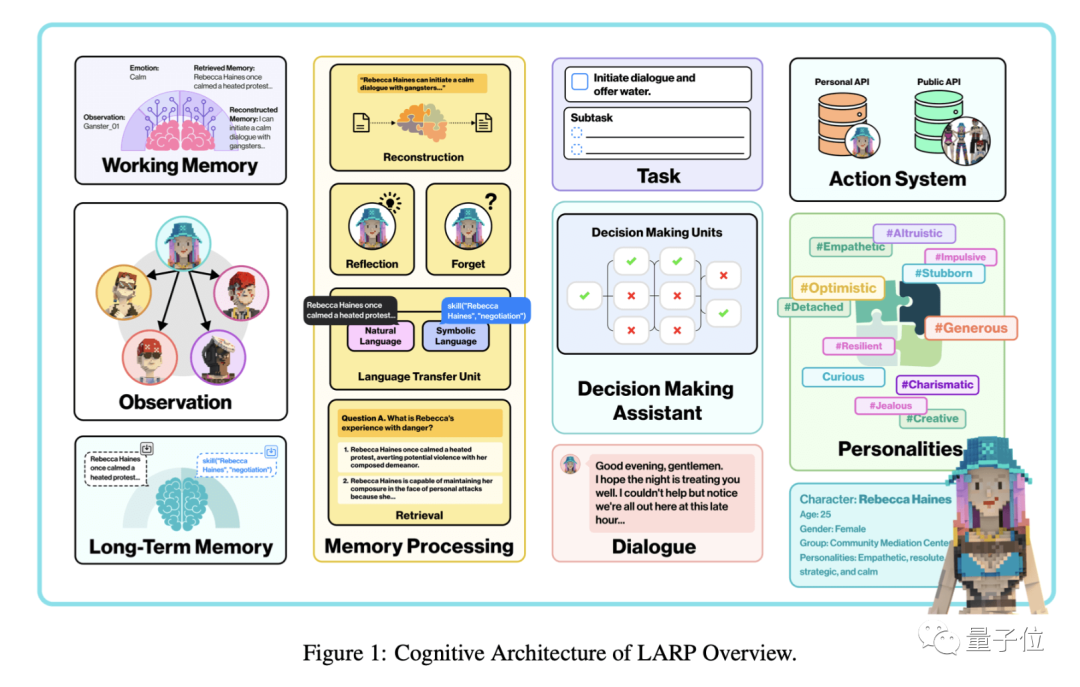
In the process, the environment and other information observed by the character will be input into the memory processing module in the form of natural language. After coding conversion and combined with the extracted long-term memory, a working memory will be formed;
The working memory is then input to the decision-making module, which ultimately produces decision-making or dialogue content.
One feature of the decision-making module is that it will break down a large goal into subtasks and use the language model to determine the order of execution of the subtasks.
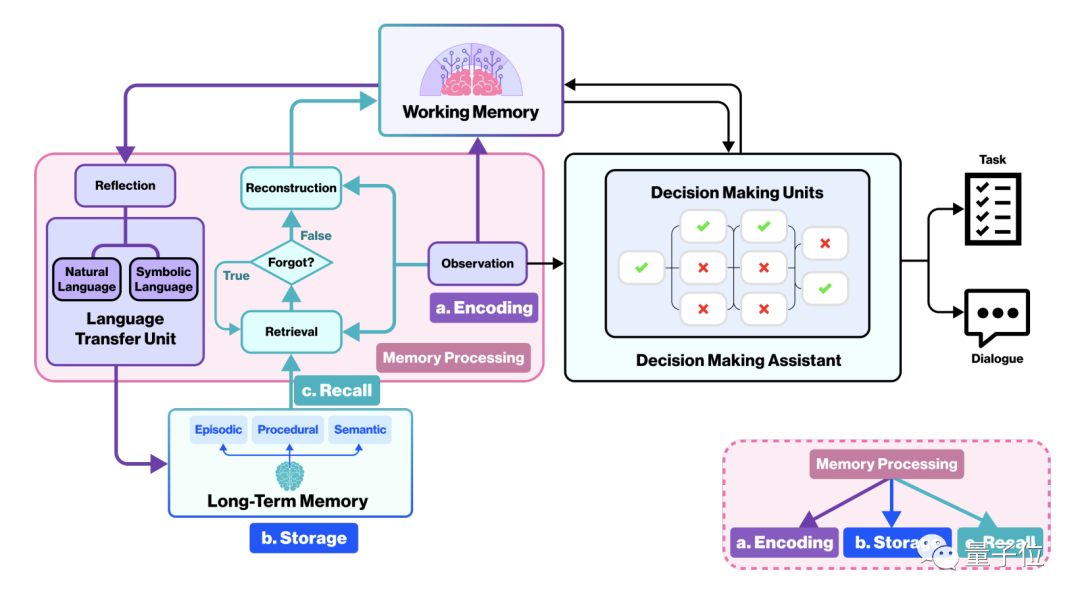
The decision made by the model will be executed by calling the API through the environment interaction module. If necessary, the backtracking module will also be called for code reconstruction;
Execution Upon success, the character's new skills will be stored and become new long-term memories.
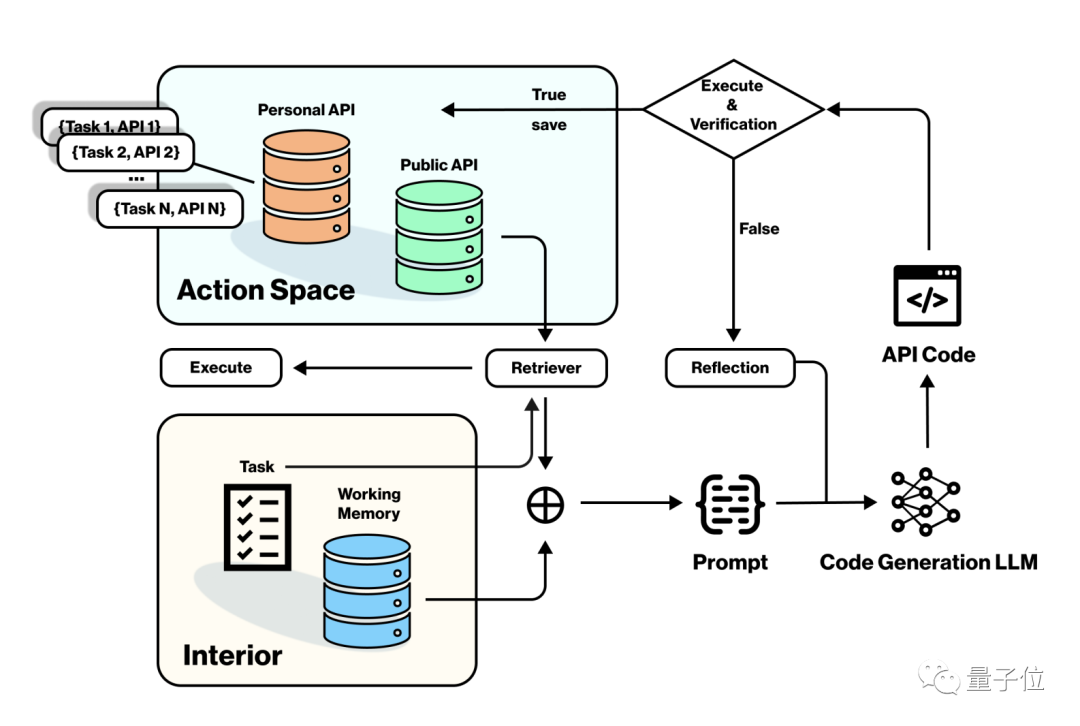
In the process of retrieving long-term memory, the characters will ask themselves questions based on the observed content, and use the three dimensions of logical statements, vector similarity and sentence similarity. Make a query to extract the answer.
The logical statement is used to query semantic memory, and the latter two are used to query episodic memory.
Semantic memory is general concepts and factual knowledge about the world, including game rules and related world views; episodic memory is specific events in the game, related to specific scenes and experiences.
The content of the former is relatively fixed, while the latter will continue to accumulate based on the Agent's experience.

In order to make the LARP-controlled agent more like a real person, the research team also deliberately introduced a forgetting mechanism that changes over time.
When the attenuation parameter σ exceeds a certain threshold, memory retrieval will fail, thus simulating the forgetting process. The calculation method of σ is set based on the laws of psychology:
σ = αλN (1 βt) - ψ
λ represents the importance of memory, N represents the number of retrievals, t represents the time elapsed since the last retrieval, ψ is the character’s own forgetting rate, α and β are scaling parameters
This formula was proposed by psychologist Wayne Wickelgren and is a supplement to Ebbinghaus's forgetting curve.
In terms of character shaping, researchers pre-trained basic models on data sets that reflected different personalities, and used specially constructed instruction data sets for supervised fine-tuning.
At the same time, the team also designed multiple data sets for the different abilities of the characters and trained a low-rank adaptation model, which was dynamically integrated with the basic model to guide the decision-making module to generate content that fits the personality.
At the same time, LARP is also equipped with action verification and conflict identification modules to ensure that the content generated by the model for the agent is subject to game environment data and prior knowledge specifications.
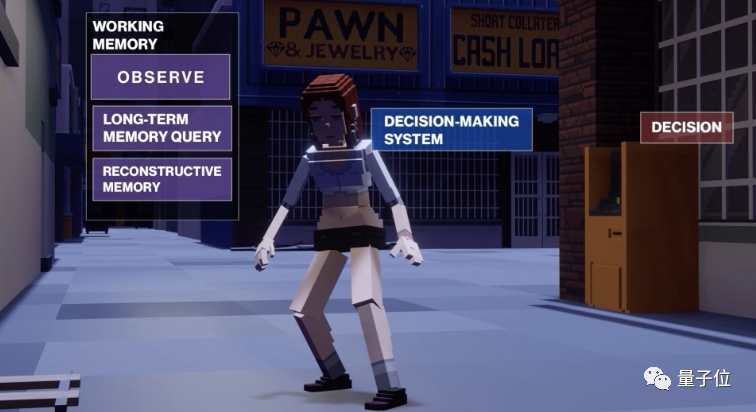
Currently, LARP’s GitHub page has been established, but it is still in a short position and the code has not been released yet.
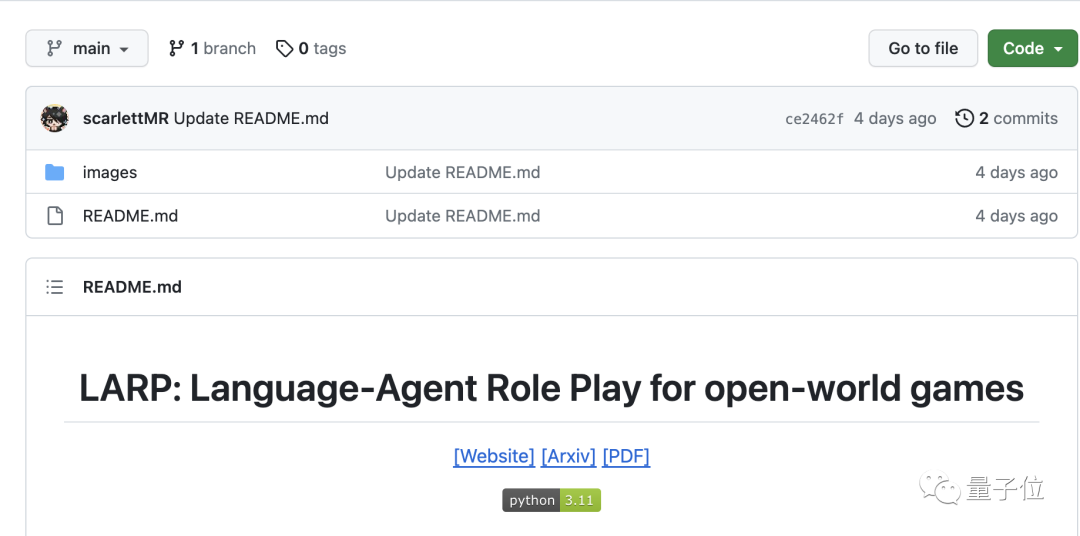
#With the deepening of large-scale model research, agent and swarm intelligence experiments have now become one of the most popular directions in AI research.
For example, the Stanford AI Town, which became popular last year, and the “AI Game Company” and “AI Werewolf” launched by Tsinghua University have all allowed people to see the benefits of multi-agent collaboration.
For more information about intelligent agents, the "Top Ten Frontier Technology Reports in 2023" launched by the Qubit Think Tank also has a detailed introduction.
Paper address: https://arxiv.org/abs/2312.17653
The above is the detailed content of 'Minecraft' turns into an AI town, and NPC residents role-play like real people. For more information, please follow other related articles on the PHP Chinese website!




